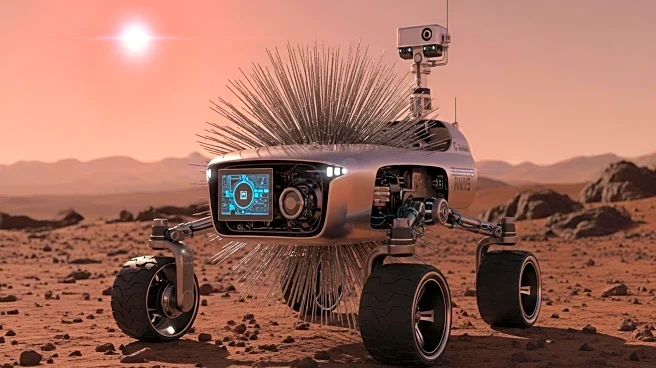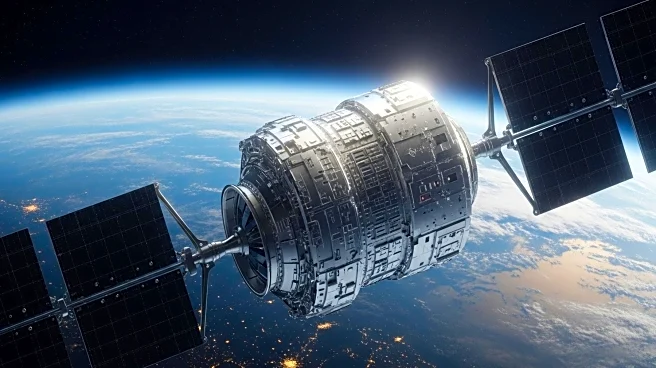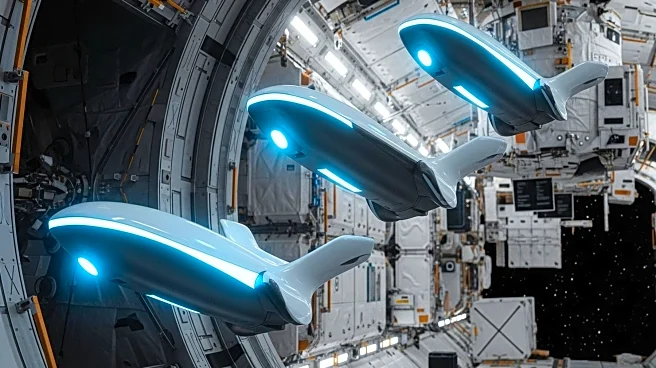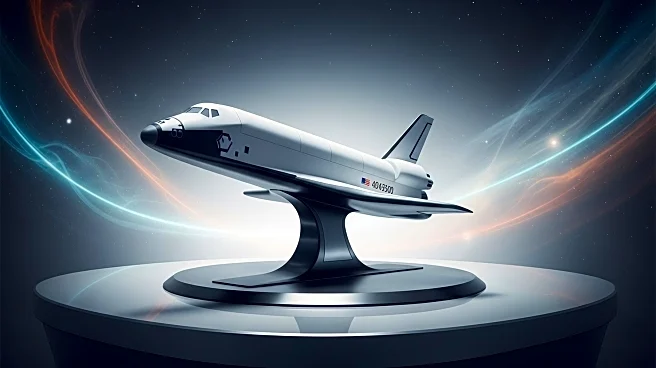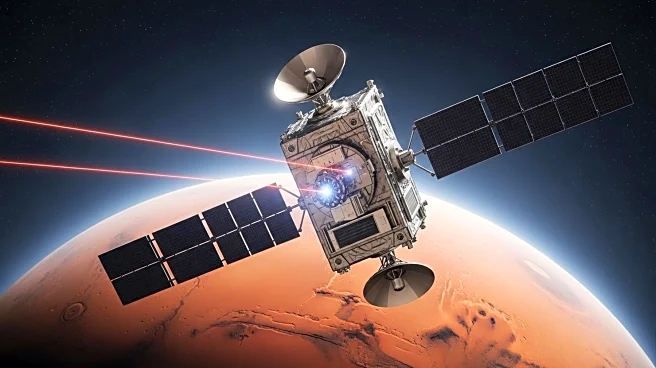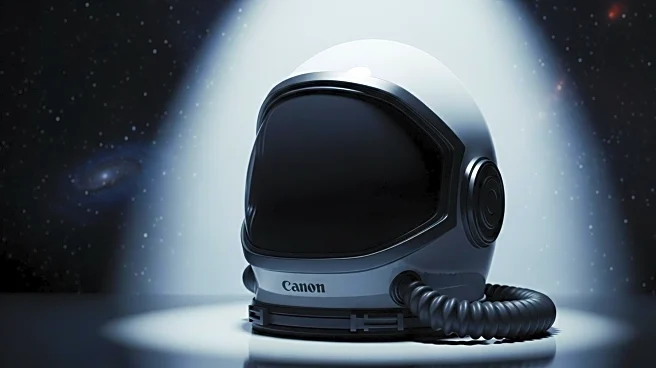What's Happening?
A new concept for Mars exploration involves the use of Tumbleweed rovers, which are lightweight, spherical robots designed to be propelled by Martian winds. These rovers, developed by Team Tumbleweed, have been tested in wind tunnels and field environments to validate their ability to navigate Mars-like terrains. The rovers could provide a cost-effective means of gathering environmental data across vast areas of the Martian surface. The design allows them to move autonomously, collecting data on atmospheric and surface conditions, and eventually serve as stationary measurement stations.
Why It's Important?
The Tumbleweed rovers represent a significant advancement in space exploration technology, offering a low-cost solution for large-scale data collection on Mars. This could enhance our understanding of Martian weather patterns, surface conditions, and potential resources. The ability to deploy multiple rovers simultaneously could provide comprehensive data coverage, aiding future manned missions and the search for signs of life. The project also highlights international collaboration in space exploration, with contributions from scientists across various countries.
What's Next?
Team Tumbleweed plans to integrate more advanced instruments into the rover prototypes and conduct further field tests in Mars-like environments, such as the Atacama Desert in Chile. These tests will focus on refining the rovers' capabilities and developing strategies for swarm coordination. The team aims to increase the technology readiness level of the rovers, making them viable candidates for future Mars missions. Continued research and development will be crucial to overcoming challenges related to the Martian environment and ensuring the rovers' operational success.

